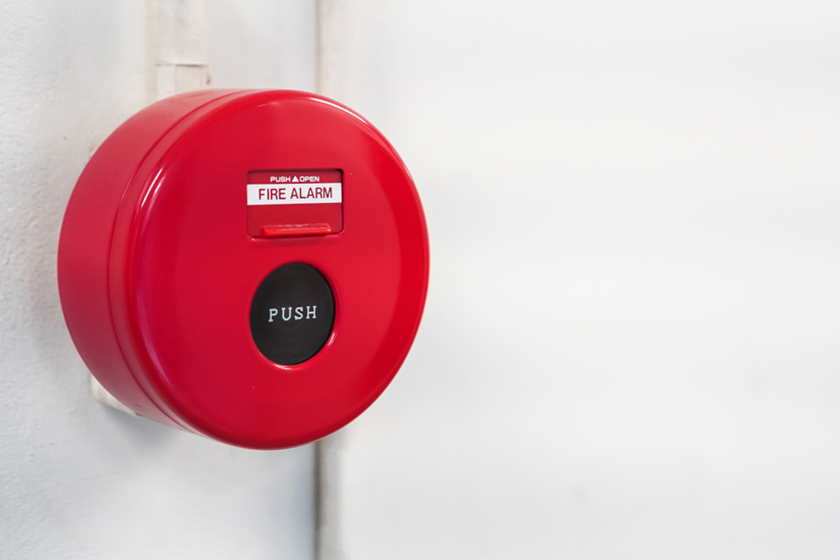How To Create A Hospital Fire Safety Plan

Creating a comprehensive hospital fire safety plan is essential for ensuring the safety of patients, staff, and visitors while maintaining compliance with local regulations and standards. A well-developed plan can prevent loss of life, reduce injuries, and minimize property damage. This guide will walk you through the steps to create an effective hospital fire safety plan.
Understanding the Importance of a Hospital Fire Safety Plan
Hospitals are complex environments with unique challenges in fire safety due to the presence of vulnerable patients, sophisticated medical equipment, and various hazardous materials. A hospital fire safety plan is crucial for several reasons:
- Patient Safety: Patients may have limited mobility or be unable to evacuate on their own.
- Regulatory Compliance: Adhering to fire safety regulations is mandatory for hospital accreditation.
- Property Protection: Hospitals house expensive medical equipment and essential medical records.
Conducting a Risk Assessment
The first step in creating a hospital fire safety plan is conducting a thorough risk assessment. This process involves identifying potential fire hazards and evaluating the current fire safety measures in place.
Identifying Fire Hazards
Fire hazards in a hospital can include electrical equipment, flammable chemicals, and cooking facilities. It’s essential to conduct regular inspections to identify and mitigate these risks. Key areas to assess include:
- Patient Rooms: Ensure that electrical equipment, such as beds and monitors, is regularly inspected and maintained.
- Kitchens: Install and maintain fire suppression systems and ensure staff is trained in fire safety protocols.
- Storage Areas: Properly store flammable materials and ensure they are clearly labeled.
Evaluating Current Fire Safety Measures
Evaluate the effectiveness of current fire safety measures, such as fire alarms, sprinkler systems, and emergency exits. Consider the following:
- Fire Alarms: Ensure that fire alarm systems are regularly tested and maintained.
- Sprinkler Systems: Verify that sprinklers are installed in critical areas and that they are in working order.
- Emergency Exits: Make sure that all emergency exits are clearly marked, unobstructed, and easily accessible.
Developing Fire Safety Policies and Procedures
After conducting a risk assessment, the next step is to develop comprehensive fire safety policies and procedures. These should be tailored to the specific needs of your hospital and comply with local fire safety regulations.
Fire Prevention Policies
Develop policies that focus on preventing fires from starting. These can include:
- No Smoking Policy: Enforce a strict no-smoking policy within the hospital premises.
- Equipment Maintenance: Implement regular maintenance schedules for all electrical equipment.
- Safe Storage: Establish guidelines for the safe storage of flammable materials.
Emergency Response Procedures
Outline the steps to be taken in the event of a fire. These procedures should be clear, concise, and easily accessible to all hospital staff. Key components include:
- Fire Detection and Alarm Activation: Establish protocols for detecting fires and activating alarms.
- Evacuation Plans: Develop detailed evacuation plans that consider the needs of patients with limited mobility.
- Firefighting Procedures: Train staff in the use of fire extinguishers and other firefighting equipment.
Training and Drills
Regular training and drills are essential to ensure that all hospital staff are familiar with the fire safety plan and can respond effectively in an emergency.
Staff Training
Provide comprehensive fire safety training for all hospital employees. This training should cover:
- Fire Prevention: Educate staff on common fire hazards and how to prevent them.
- Emergency Response: Train employees in emergency response procedures, including how to use fire extinguishers and evacuate patients safely.
- Communication: Teach staff how to communicate effectively during a fire emergency, including how to use the hospital’s emergency communication systems.
Fire Drills
Conduct regular fire drills to test the effectiveness of your fire safety plan and ensure that all staff are prepared to respond in an emergency. Consider the following:
- Frequency: Conduct fire drills at least twice a year, and more frequently if necessary.
- Variety: Simulate different fire scenarios to ensure that staff can respond to various types of emergencies.
- Evaluation: After each drill, evaluate the response and identify areas for improvement.
Integrating Technology and Advanced Systems
Leveraging technology and advanced fire safety systems can significantly enhance the effectiveness of your hospital fire safety plan.
- Fire Alarm Systems: Modern fire alarm systems are more sophisticated and can provide early detection and precise location information. Ensure that your hospital’s fire alarm system is up-to-date and regularly maintained.
- Sprinkler Systems: Install and maintain automatic sprinkler systems in key areas of the hospital. These systems can quickly extinguish fires, preventing them from spreading and causing further damage.
- Emergency Lighting: Emergency lighting is critical for guiding staff and patients to safety during a fire. Ensure that all emergency lights are functioning correctly and are regularly tested.
- Communication Systems: Effective communication is vital during a fire emergency. Utilize advanced communication systems to ensure that all staff are promptly informed and can coordinate their response.
Partnering with Fire Safety Experts
Collaborating with fire safety experts can provide valuable insights and ensure that your hospital fire safety plan meets all regulatory requirements and industry best practices.
- Consulting Services: Engage the services of professional fire safety consultants to conduct risk assessments, develop policies, and provide training. Their expertise can help you identify potential hazards and implement effective safety measures.
- Fire Safety Audits: Regular fire safety audits by external experts can ensure that your fire safety plan remains effective and compliant with regulations. These audits can identify areas for improvement and help you stay up-to-date with the latest fire safety standards.
- EST Partnership: Partnering with industry leaders such as Edwards System Technologies (EST) can provide access to top-of-the-line fire safety products and technologies. This partnership can enhance the overall safety of your hospital.
Regular Maintenance and Inspections
A hospital fire safety plan is only as effective as its implementation. Regular maintenance and inspections are critical to ensuring that all fire safety equipment and systems are functioning correctly.
Routine Inspections
Conduct routine inspections of all fire safety equipment, including fire alarms, sprinkler systems, and emergency lighting. Inspections should cover:
- Fire Alarms: Test all fire alarms regularly to ensure they are operational.
- Sprinkler Systems: Check sprinkler systems for leaks or blockages and ensure they are in good working order.
- Emergency Lighting: Verify that all emergency lighting is functioning correctly and that backup power sources are available.
Equipment Maintenance
Regular maintenance is essential for keeping fire safety equipment in good condition. Develop a maintenance schedule that includes:
- Fire Extinguishers: Inspect and service fire extinguishers according to manufacturer guidelines.
- Smoke Detectors: Clean and test smoke detectors regularly to ensure they are responsive.
- Fire Doors: Check fire doors to ensure they close properly and are not obstructed.
Record Keeping
Maintain detailed records of all inspections, maintenance, and repairs. These records can help demonstrate compliance with fire safety regulations and provide a history of your fire safety efforts.
Compliance with Regulations
Staying compliant with local, state, and federal fire safety regulations is crucial. Regularly review and update your fire safety plan to ensure it meets current standards. Key areas to monitor include:
- Building Codes: Ensure that your hospital meets all relevant building codes related to fire safety.
- Health and Safety Regulations: Stay informed about changes to health and safety regulations that could impact your fire safety plan.
- Accreditation Standards: Adhere to the fire safety standards required for hospital accreditation by organizations such as The Joint Commission.
Engaging Stakeholders in Fire Safety
Creating a hospital fire safety plan is a collaborative effort that involves engaging various stakeholders, including hospital staff, patients, and the local fire department.
Involving Hospital Staff
Hospital staff play a crucial role in fire safety. Ensure that all employees are aware of their responsibilities and are actively involved in maintaining a safe environment. Steps to take include:
- Fire Safety Committees: Establish fire safety committees that include representatives from different departments.
- Regular Meetings: Hold regular meetings to discuss fire safety issues and updates.
- Feedback Mechanisms: Create channels for staff to provide feedback on fire safety practices and suggest improvements.
Educating Patients and Visitors
Patients and visitors also need to be informed about fire safety procedures. Develop educational materials and communication strategies to raise awareness. Consider the following:
- Signage: Post clear and concise fire safety instructions in patient rooms, hallways, and common areas.
- Brochures: Provide brochures that outline fire safety procedures and emergency contacts.
- Orientation: Include fire safety information in patient orientation programs.
Collaborating with the Local Fire Department
Working closely with the local fire department can enhance your hospital’s fire safety plan. The fire department can provide valuable support and resources, such as:
- Training: Arrange for fire department personnel to conduct training sessions for hospital staff.
- Inspections: Schedule regular inspections and assessments by the fire department to ensure compliance with fire safety regulations.
- Emergency Response: Develop a coordinated emergency response plan that involves the fire department.
Continuous Improvement and Review
A hospital fire safety plan should be a living document that is regularly reviewed and updated to reflect changes in the hospital environment, new regulations, and advancements in fire safety technology.
Regular Reviews
Conduct regular reviews of your fire safety plan to identify areas for improvement. These reviews should include:
- Policy Updates: Update fire safety policies to reflect changes in regulations and best practices.
- Procedure Revisions: Revise emergency response procedures based on feedback from drills and real incidents.
- Technology Upgrades: Incorporate new fire safety technologies and systems as they become available.
Learning from Incidents
Analyze fire incidents and near-misses to identify lessons learned and improve your fire safety plan. Key steps include:
- Incident Reports: Prepare detailed reports of fire incidents and near-misses, including causes, responses, and outcomes.
- Root Cause Analysis: Conduct root cause analysis to determine underlying factors that contributed to incidents.
- Action Plans: Develop and implement action plans to address identified issues and prevent future incidents.
Staying Informed
Stay informed about developments in fire safety by attending industry conferences, participating in professional organizations, and subscribing to relevant publications. This will help you stay current with best practices and emerging trends.
Implementing a Culture of Safety
Creating a culture of safety within your hospital is essential for the success of your fire safety plan. Encourage all staff to prioritize fire safety and make it an integral part of their daily activities.
Leadership Commitment
Hospital leadership must demonstrate a commitment to fire safety. This can be achieved by:
- Setting Expectations: Communicate fire safety expectations to all staff.
- Leading by Example: Model fire-safe behaviors and practices.
- Providing Resources: Allocate the necessary resources for fire safety training, equipment, and maintenance.
Employee Engagement
Engage employees in fire safety initiatives and recognize their contributions. Strategies to consider include:
- Safety Awards: Implement a safety award program to recognize outstanding fire safety efforts.
- Incentives: Provide incentives for staff who actively participate in fire safety programs.
- Communication: Foster open communication about fire safety issues and encourage staff to report concerns.
At Fire Safety Alarms, Inc., we specialize in helping healthcare facilities develop and implement effective fire safety plans.
Contact us today to learn more about how we can support your hospital’s fire safety needs. We are dedicated to ensuring the safety and security of your healthcare environment.
